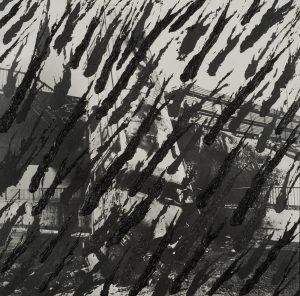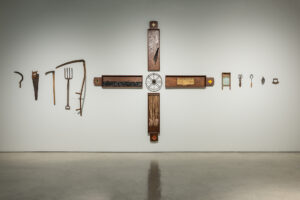The photograph used in this work was taken by Sam McLeod for the London Free Press to report a train derailment at Simcoe, Ontario. Two of Benner’s friends and co-workers, Edward Wadley, the engineer, and Ray Merritt, the head-end brakeman, died in the ‘accident.’ At the time, Benner was working as a spare board brakeman for the company and could have been on the train if either one of the brakemen or conductor had been unable to make the trip. In 1996 he wrote:
Some of my ancestors have worked on the railroad since the late 1800s. My grandfather was an operator and dispatcher for the CN/WABASH. My father was a fireman and engineer for the CNR. I worked for the Norfolk & Western Railroad (Wabash) out of St. Thomas, Ontario from 1970 (age 21) to 1980 as a brakeman and conductor.
It has been said that ‘railroad gets in your blood.’ This is partly true but I have no regrets having quit the railroad. I miss the camaraderie; the amazing landscapes both at night and day; the smells; the sounds. However, I realize the railroads have a tainted, unsympathetic history vis-à-vis First Nations, the land, working conditions, etc. I also know that the railroad ‘life’ contributed to my becoming a full-blown alcoholic by the time I was 40.
That said, I am both attracted and repulsed by ‘the train.’ My equivocation is based upon an intimate knowledge of the subject and the object. The object(s) — in other words, a corpse.
Tar is added to reproduction of the original image, which is then rephotographed and more tar is added. In the sixth panel in the series, virtually all of the image is blackened. Matthew Teitelbaum has written: “The work takes as its subject… an early-morning-after-a-long-night train crash. It is a guttural scream. Not merely because Benner… was on the spare board at the time and could have been on the train, but because railroad workers knew better than anyone how management practices led to the use of diesels which, at the time of the accident, were worn down after twenty-five years of service… It is both a testimony to the men who died tragically, and an interrogation of the newspaper photograph which had made a spectacle out of grief.”






